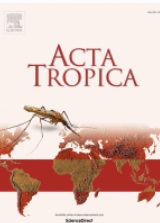Heterorhabditis indica (Nematoda: Rhabditida) a possible new biological control agent against the vector of Chagas disease
Selene Smith-Ávila, Carlos N. Ibarra-Cerdeña, Juan Esteban Barranco-Florido, Víctor Manuel Vidal-Martínez

Acta Tropica, Volume 256, 2024,107262, ISSN 0001-706X
https://doi.org/10.1016/j.actatropica.2024.107262
Abstract
Chagas disease is a zoonosis caused by the protozoan Trypanosoma cruzi and transmitted through the feces of triatomines, mainly in Latin America. Since the 1950s, chemical insecticides have been the primary method for controlling these triatomines, yet resistance has emerged, prompting the exploration of alternative approaches. The objective of this research was to test the capacity of the entomopathogenic nematodes Heterorhabditis indica and its symbiotic bacteria Photorhabdus luminescens, to produce mortality of Triatoma dimidiata a key vector of T. cruzi in Mexico under laboratory conditions. Two bioassays were conducted. In the first bioassay, the experimental unit was a 250 ml plastic jar with 100 g of sterile soil and three adult T. dimidiata. Three nematode quantities were tested: 2250, 4500, and 9000 nematodes per 100 g of sterile soil (n/100 g) per jar, with 3 replicates for each concentration and 1 control per concentration (1 jar with 100 g of sterile soil and 3 T. dimidiata without nematodes). The experimental unit of the second bioassay was a 500 ml plastic jar with 100 g of sterile soil and 4 adult T. dimidiata. This bioassay included 5, 50, 500, and 5000 n/100 g of sterile soil per jar, with 3 replicates of each quantity and 1 control per quantity. Data were analyzed using Kaplan-Meyer survival analysis. Electron microscopy was used to assess the presence of nematodes and tissue damage in T. dimidiata. The results of the first bioassay demonstrated that the nematode induced an accumulated average mortality ranging from 55.5 % (2250 n/100 g) to 100 % (4500 and 9000 n/100 g) within 144 h. In the second bioassay, the 5000 n/100 g concentration yielded 87.5 % mortality at 86 h, but a concentration as small as 500 n/100 g caused 75 % mortality from 84 h onwards. Survival analysis indicated higher T. dimidiata mortality with increased nematode quantities, with significant differences between the 4500, 5000, and 9000 n/100 g and controls. Electron microscopy revealed the presence of nematodes and its presumably symbiotic bacteria in the digestive system of T. dimidiata. Based on these analyses, we assert that the H. indica and P. luminescens complex causes mortality in adult T. dimidiata under laboratory conditions.